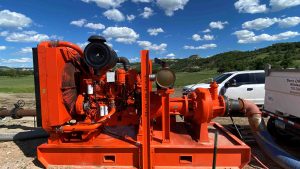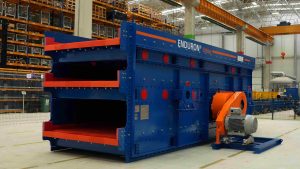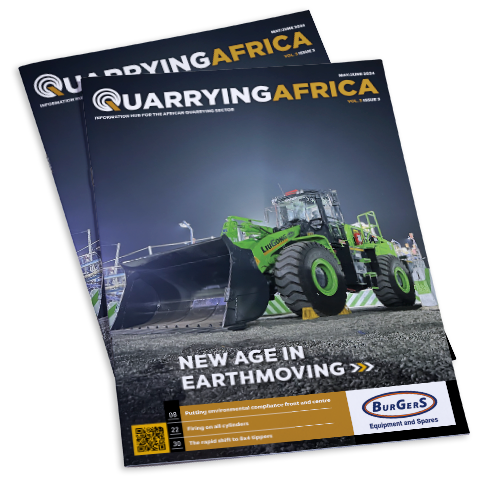A key takeaway for Loadtech from the 52nd Institute of Quarrying Southern Africa (IQSA) annual conference, which took place on 14-15 April 2023 in Durban, is that there is a growing appetite for digital systems in the local quarrying fraternity, particularly for payload management systems.
This, says Loadtech sales director Glen Webster, is driven by the industry’s drive to eliminate guesswork out of quarry loadout processes, thus increasing efficiency, productivity and ultimately the bottom line.
“Consistent with what we have seen in recent years, there was a lot of interest in our load weighing systems at the IQSA conference,” says Webster. “In recent years we have observed increased uptake of these systems in Africa, as local mines and quarries increasingly see value in digital systems.”
Loadtech’s growth in the past two to three years, he says, is a clear indication that the market is maturing. The authorised Loadrite dealer in sub-Sahara Africa for the past 24 years, Loadtech has recorded a substantial 15% business growth in the past three years.
“We believe it is largely to do with the maturity of the local market, which is now ready for digitalisation of processes. Some, however, still operate in the ‘stone age,’ but the majority of customers now understand what they have to do to survive and succeed in such a cut-throat business environment,” explains Webster.
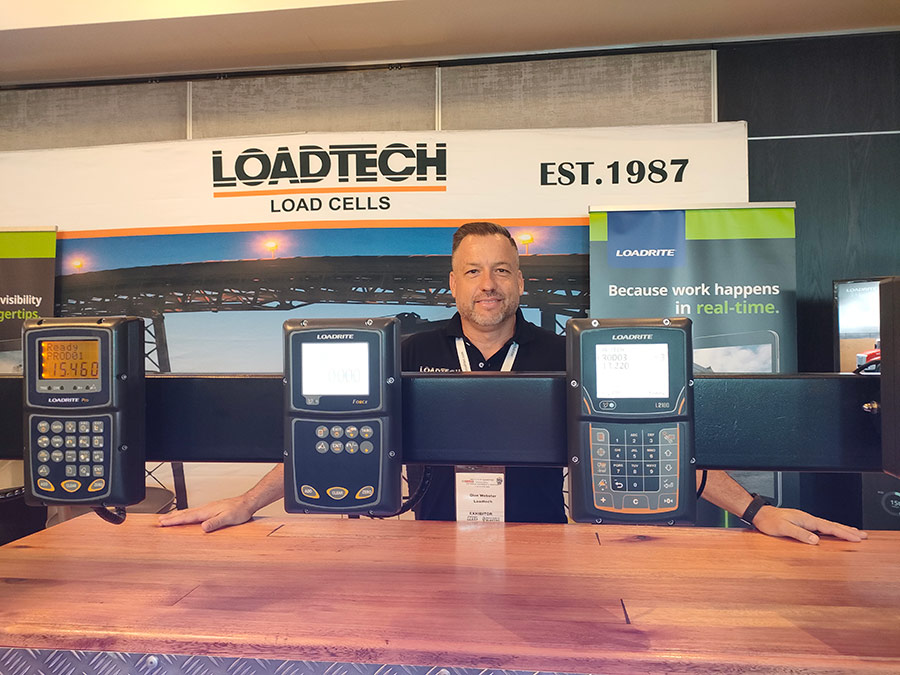
Full line
The company used the IQSA conference to showcase its full line-up of Loadrite solutions available for the local industry. These included the L-Series SmartScale for loaders, the X-Series excavator payload management systems, the C-Series conveyor belt scales and the InsightHQ for actionable insights, dashboards and notifications.
The major drawcard at the show was the Loadrite L3180 Smart Scale, which is said to usher in a new era in load weighing systems. A major talking point, says Webster, is the use of angle sensors instead of the traditional rotary triggers. This allows the system to offer accurate weighing in tough conditions.
Webster notes that the next generation L3180 loader scale is the company’s best yet, changing the game in the industry by being able to adjust for rough terrain, with technique and movement so new that skilled operators can load with greater accuracy, precision and speed.
“Intelligence in the weighing software and new hardware gives operators of all skill levels the ability to load more speedily and more productively than ever before.”
The Loadrite L3180 SmartScale uses weighing intelligence and solid-state sensors for more accurate, precise and faster loading. It also connects machines and devices for the collection and syncing of data via the built-in WiFi to the InsightHQ reporting portal. When using the cloud-based InsightHQ quarry reporting portal, personnel can gain access to site production and operator performance KPIs on desktop or mobile devices.
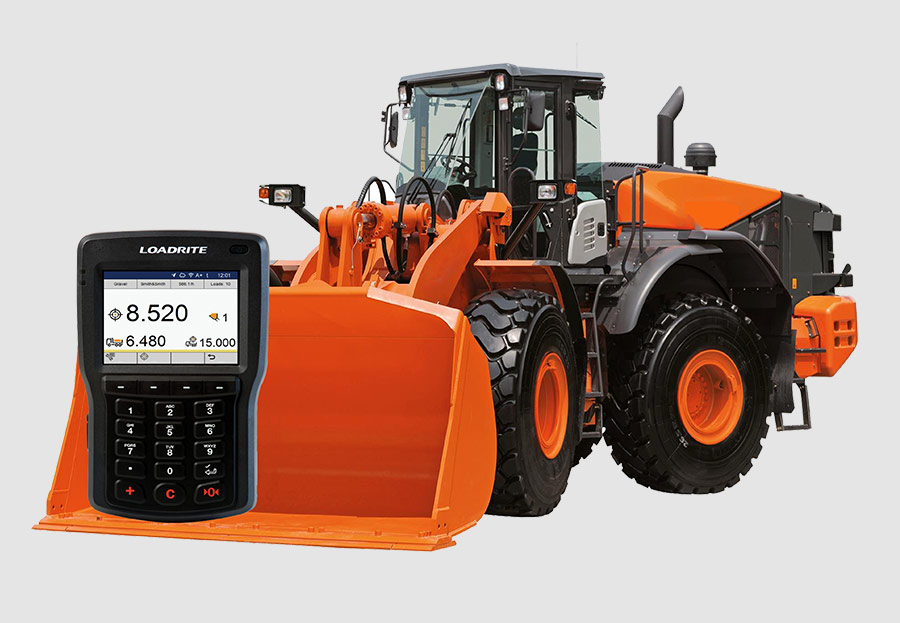
Key attraction
Another key exhibit was the Loadrite 360 – a new loadout automation and reporting system for quarry loadout activities. It comprises a wheel loader onboard scale, an automated communications connection and a performance reporting tool. Jobs are entered in the office and selected in the loader, reducing data entry, eliminating mistakes and improving customer satisfaction.
The technology is designed to transform the way in which quarries have always conducted their loadout processes. Traditionally, operations have relied on weighbridges alone. These are known to be prone to product errors and weight challenges.
With the Loadrite 360, aggregate producers can turn their workflows around – literally. Instead of having a weighbridge at the exit, it could be moved to the entrance area, where information about the truck – including the registration, tonnage and product required – is captured and relayed to the loader. As soon as the truck drives in, the loader operator already knows the quantity and type of material to be loaded. This reduces loading-, waiting- and idle-times.
“The Loadrite 360 can holistically improve loadout operation through performance metric tracking, job data automation and real-time 360° job visibility. It connects the loader and the weighbridge so as to provide data sharing of loadout jobs, resulting in greater efficiency, improved visibility and higher product sales,” says Webster.
The two-way automated communication shows jobs requested at the weighbridge as a job list on the scale inside the loader cab and completed loadout data is fed directly into the weighbridge ticketing system. This reduces double entry work and data entry errors for both the operator and the weighbridge attendant. Accurate on-screen job data reduces error-prone verbal communications and allows more time for loading.
The Loadrite 360 in-cab indicator clearly presents a list of loadout jobs in order of priority by truck registration. By providing simple, relevant and prioritised job data to the operators, they are empowered to complete jobs more quickly across the site with no loss in loading accuracy. The list of loadout jobs also provides richer loadout job queue data and thus reduces verbal communication errors and truck waiting time.
The system uses shared visibility of payload data, job data automation and performance metric tracking to highlight opportunities for improvement. The performance reports track loader metrics including tonnes per hour (tph) across multiple or individual loaders, actual time spent on truck loading activities and loader operator efficiency which highlights staff training needs.
With the InsightHQ reporting option, managers can monitor site production and performance anywhere, at any time, on any mobile device or web browser. InsightHQ also allows centralisation of data from excavator and belt scales.
“Although the Loadrite 360 is primarily a tool to improve the accuracy and speed of loadout operations, it can also reveal hidden improvement opportunities,” says Webster. “The system enables users to drill into production data to see individual trucks, loaders or even bucket-by-bucket data and identify opportunities to improve.”
“With the Loadrite 360, quarry operators can reduce fuel and maintenance costs by avoiding unnecessary idling of loaders and trucks in loadout. It also provides quarries with increased truck visibility to ensure that trucks are loaded to capacity in the shortest possible time,” adds Webster.
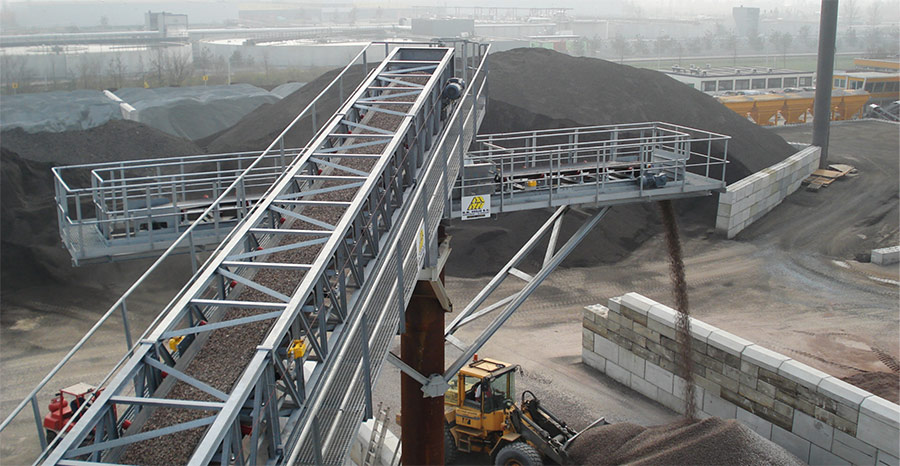
More solutions
Loadtech also used the conference to showcase some of its old generation technology such as the Loadrite L2180, which comes with superior weighing technology having accurate and consistent weighing within +/-1% of payload with optional ground slope compensation.
The rotary position sensor continuously monitors boom position over the entire lift, allowing multiple measurement points. Multi-point weighing allows variations in weights calculated to be averaged out or even discarded if they are outside tolerance levels. These variances can be caused by inexperienced operators or weighing on rough ground.
Another key exhibit was the C-Series conveyor belt scales. The Loadrite C2850 is an advanced conveyor belt weighing system designed in particular for rugged industries such as aggregates, construction, scrap metal recycling and mining. It is the ideal tool for monitoring inventory, production output and product loadout, while, at the same time, providing essential data management tools to drive productivity and machine performance decisions.
The C2850 scale consists of four main components: the load cells, scale frame, speed sensor and an integrator which processes the signal from the conveyor belt scale. The load cells react to vertical forces, giving an accurate weight, while the belt speed is monitored by the speed sensor. The weight and speed signals are electronically converted to a digital weight, which appears on the display in pounds, kilograms or tonnes per hour.
“The key message at this year’s show was to remind quarry operators how Loadtech can help them improve productivity and efficiency at their operations. In a world where data has become the ‘new currency’, payload management technology is a must-have on quarry sites. The systems help operators accurately and effectively load haul trucks to capacity, within production, path-to-zero-harm and loading unit parameters,” concludes Webster.

